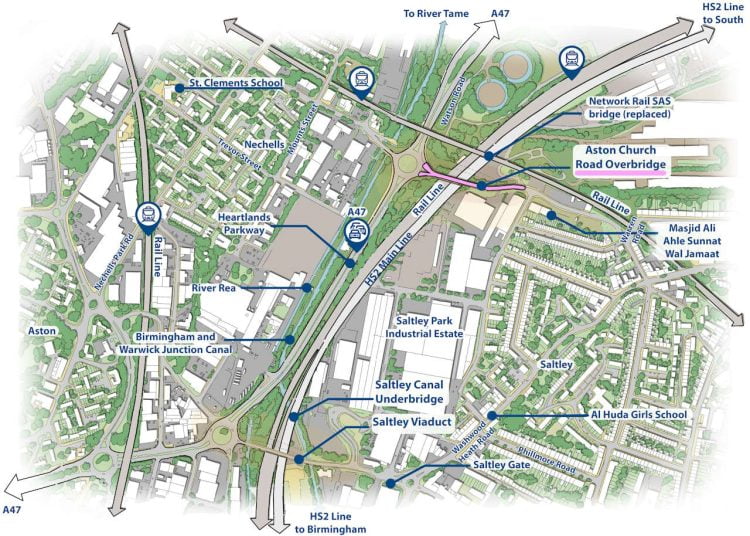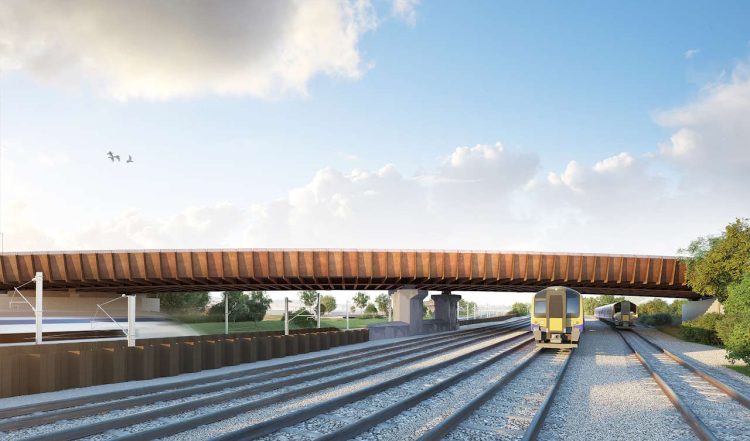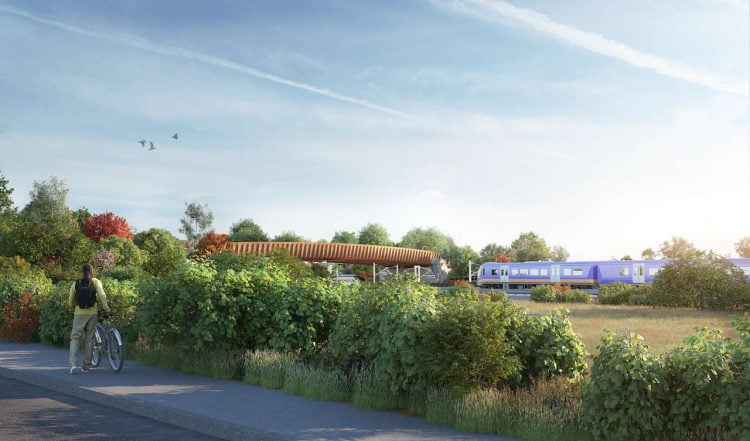Birmingham City Council has approved an eco-friendly road bridge to be erected over the HS2 line in north-east Birmingham.
The design of the bridge will ensure that its structure blends sympathetically with the local environment.
It will be erected on Aston Church Road, which is two miles north-east of Birmingham city centre and will span the HS2 line between Saltley, Washwood Heath, and Nechells.

Initial designs for the bridge were released in 2021, but following public consultation, the design was changed to provide a wider walkway, sufficient space for cyclists, and better lighting.
The bridge will be lit by LED lights that give better illumination and are safer for pedestrians and cyclists, reducing light spillage to the trains below. By decreasing the overall light pollution the design will also protect wildlife, particularly bats that may forage underneath the bridge.

Further public feedback has resulted in the bridge panels being made of weathered instead of stainless with a perforated pattern that maximises light and views and makes the bridge feel warmer and better for pedestrians.
The bridge was designed in a Design Joint Venture between Mott MacDonald and Systra.
Around the bridge, there will be green spaces with woodland planting that includes silver birch, hazel, and hawthorn, and wildflowers and grasses to provide new wildlife havens.

The new HS2 line will require extra space, and that will be created by demolishing the original bridge. Once the new bridge is built it will connect to the existing road network, which will require a new alignment for Aston Church Road.
The new road alignment will include safe pedestrian crossing points and a new public space in front of the local mosque, for which consultation was carried out between Weston Williamson + Partners, the local community, and users of Masjid Ali Ahle Sunnat Wal Jamaat Mosque.
The consultation has produced designs for a paved area with seating, a cycle crossing, and an area for ornamental shrubs and tree planting.
Construction of the bridge began with preparatory works last year, whilst the main civil works are about to start, while the bridge and associated highway works are planned to be complete by summer 2025.
David King, Senior Project Manager at HS2 Ltd said: “We welcome the approval of our designs for Aston Church Road Overbridge by Birmingham City Council. We’ve worked closely with the Council and the local community to make sure this bridge blends with the local surroundings and enhances and connects green spaces in this urban part of Birmingham.
“The bridge is a key part of the wider improvements HS2 is bringing to this area of Birmingham, providing better pedestrian and cycle connectivity for the local community which will help support longer-term sustainable economic growth for the area.
Nick McGough, Director at Weston Williamson + Partners, and Lead Architect for the Balfour Beatty VINCI Design Joint Venture, which is constructing the line in the West Midlands, said: “Reflecting community feedback, our designs balance challenging technical constraints in developing a robust but elegant bridge, whilst seeking every opportunity to both enhance the user experience and increase biodiversity through our adjoining landscape proposals.
“The integrated bridge lighting is particularly innovative and reduces urban light pollution in a way which is sympathetic to local wildlife whilst providing enhanced light levels that will help make the bridge attractive to both pedestrians and cyclists.”






Responses